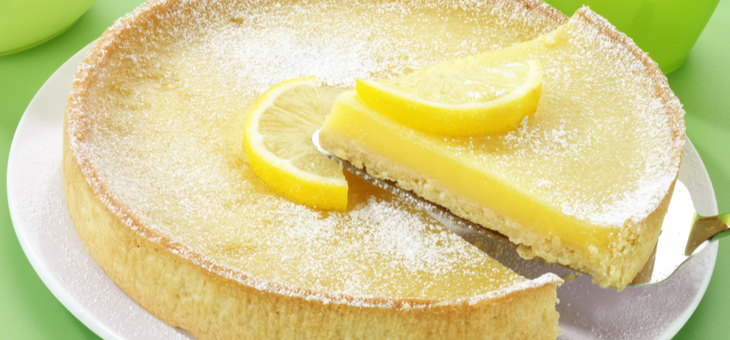This well-known treat is an ideal recipe for a very young cook. The slice has three distinct layers: a biscuit base, a gooey, sharp lemon middle and a soft cake topping.
It must be quite cold before cutting or the gooey part won’t be set. Cut it with a very sharp knife dipped in very hot water, to avoid the slice sticking to the knife.
Makes: 15-18
Ingredients
- butter, for greasing
- 3 lemons
- 4 large eggs
- 11/2 cups castor sugar 1/4 cup plain flour
- pure icing sugar, for dusting
Base
- 175g plain flour
- 1/3 cup castor sugar 150g cold butter, roughly chopped
Method
Preheat the oven to 180°C (160°C, if fan-forced). Butter a 18cm × 28cm slice tin and line it with baking paper long enough to have a little overlap at the sides to lift out the slice.
To make the base, whizz the flour and sugar in a food processor for a few seconds, then add the butter and process until the mixture starts to form a ball. Tip the dough into the prepared tin, and press over the base with your fingers. Bake for 20 minutes until golden. At this point, it might be a good idea to set a timer for 15 minutes, as you need to do a few things in the minutes before the base is cooked.
When the base is nearly cooked, zest and juice the lemons. Strain the juice to remove any seeds.
Whisk the eggs and sugar in a large bowl until well mixed but not thick. Stir in the lemon juice and zest, then sift in the flour and whisk gently to combine.
Remove the base from the oven and reset the oven temperature to 150°C (130°C, if fan-forced). Carefully and slowly pour the lemon mixture over the base – do this gently as you don’t want the base to lift. (A good way to do this is to pour the mixture over the back of a spoon to reduce the impact of the liquid – in this case, it might be a good idea to put the mixture into a jug.) Bake for about 35 minutes until the top is golden and feels a little springy. Stand the tin on a wire rack to cool.
When completely cold, lift the slice out of the tin and cut it into fingers. Serve dusted with icing sugar and with a dollop of the best cream.
A note on flour: I have chosen to measure flour by weight rather than cups, unless the result doesn’t depend on an exact amount. Precision is important when baking. Sometimes it is straightforward to convert a weight measurement to cups, but sometimes it is not and disappointment can follow. One cup of flour weighs 150g.
Recipe taken from The Cook’s Apprentice by Stephanie Alexander.
The Cook’s Apprentice is the essential teaching cookbook for the younger cook who’s just starting out. This wonderful book is full to the brim with everything new foodies need to know to become relaxed and confident in the kitchen.
Arranged alphabetically, The Cook’s Apprentice includes 56 ingredient chapters – from Apples to Zucchini – and more than 300 achievable recipes ranging from classics that every cook will want to try, to exciting new dishes that reflect our diverse nation. Stephanie takes you into her kitchen as she explains more than 100 important techniques in straightforward language, discusses the kitchen tools she likes to use, and describes ingredients you might not know: How do I whisk eggs to soft peaks? What does it mean to ‘make a well’ in dry ingredients? Why should I roast spices? How do I prepare fresh chillies safely? What is ‘resting meat’ and why should I do it? How do I prepare a mango? What flavours work well together? What is fresh mozzarella? How do I say ‘quinoa’?
The Cook’s Apprentice gives all you new cooks the inspiration you need for a lifetime of enjoyment in the kitchen.
You can purchase The Cook’s Apprentice at penguin.com.au
Penguin Books.
Related articles:
Lemon Syrup Cake
Lucy’s Lime Tart
Orange Poppy Seed Cake

